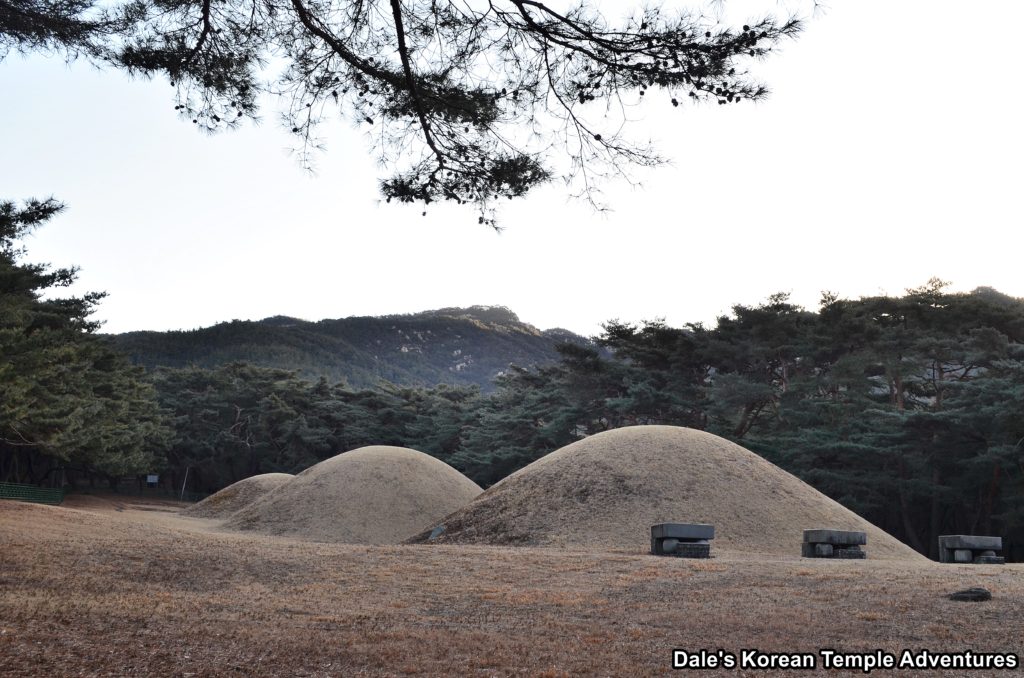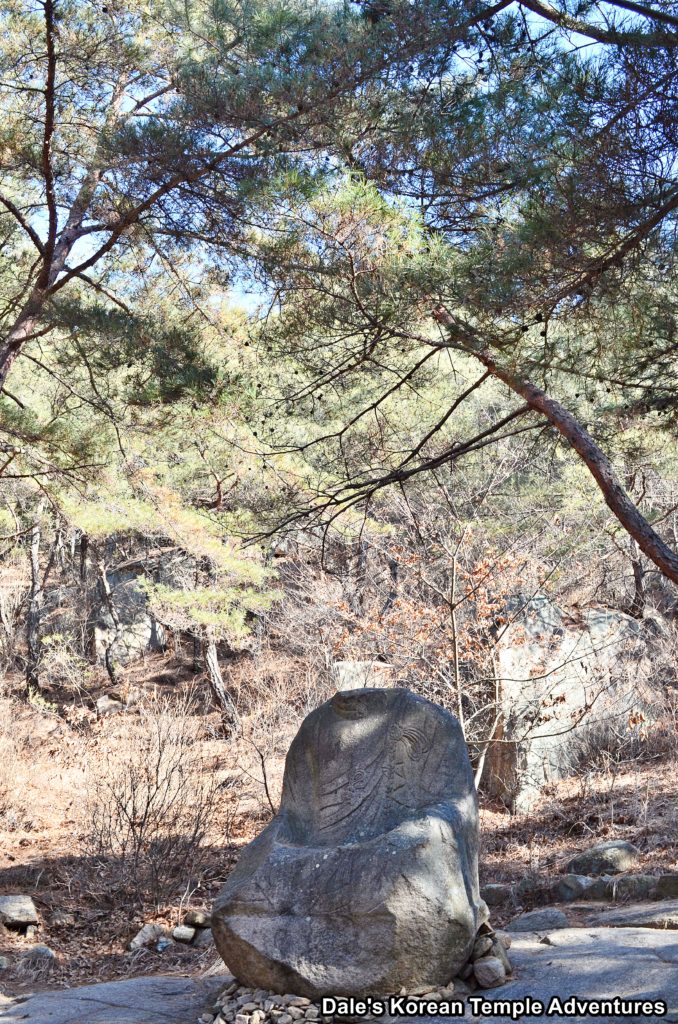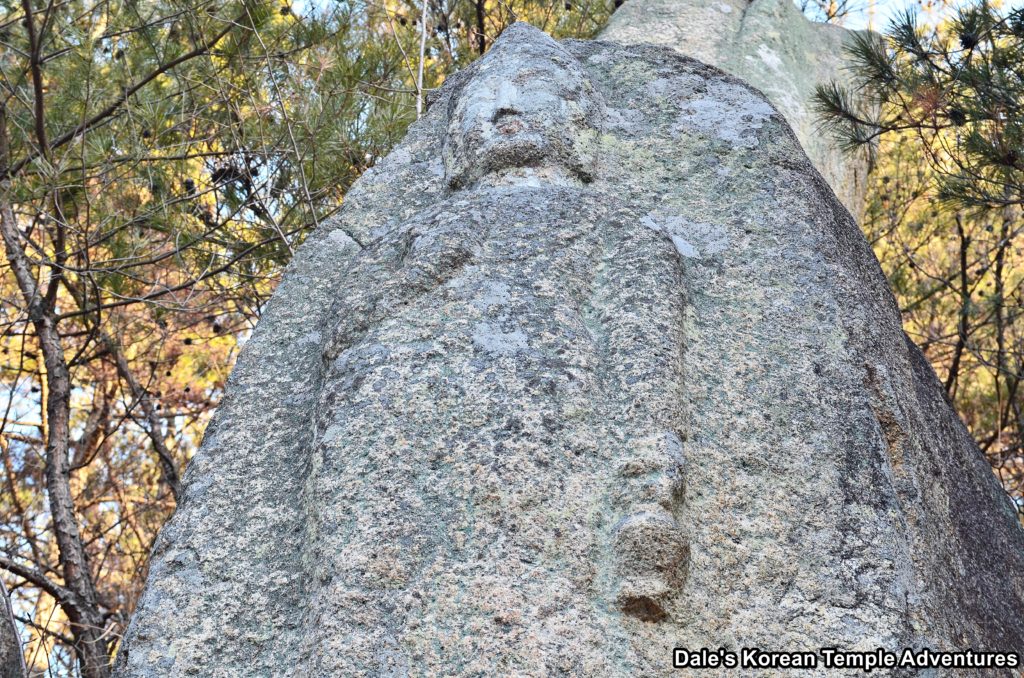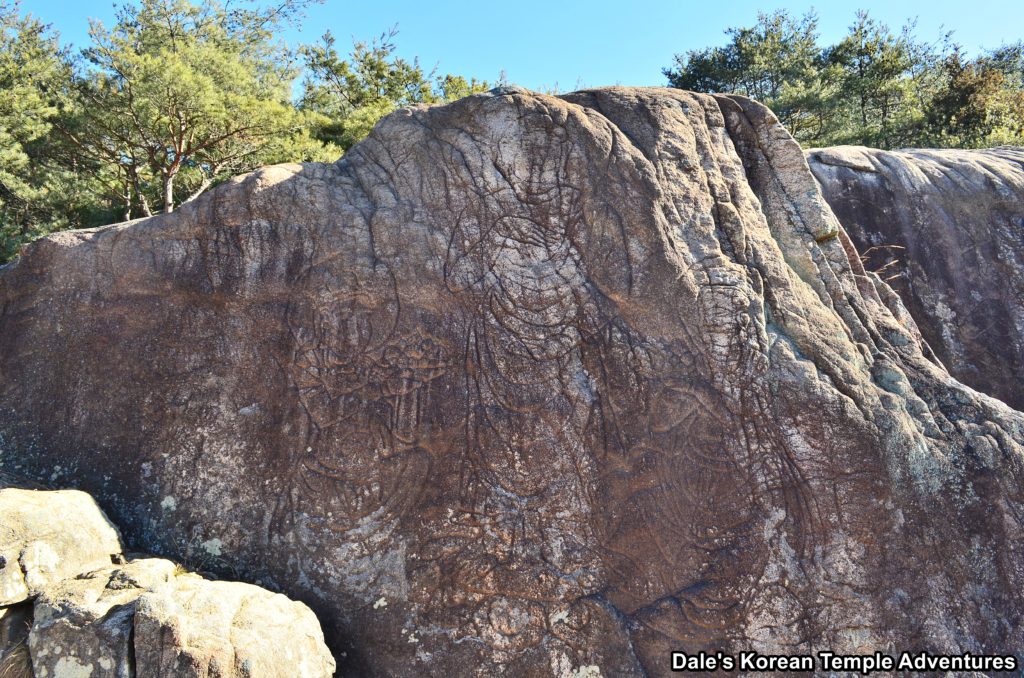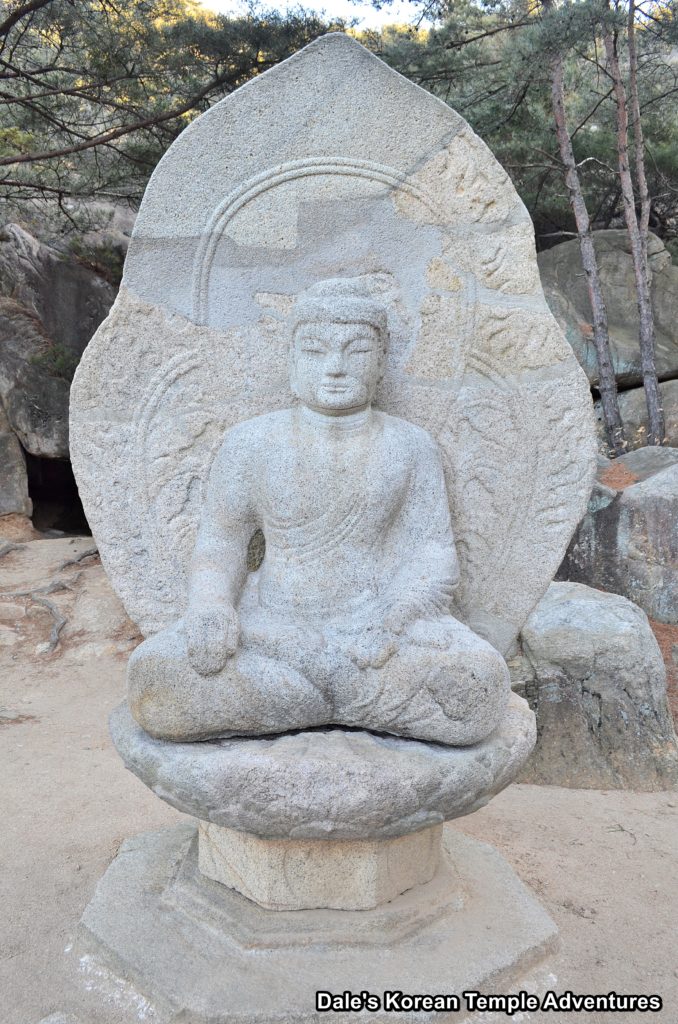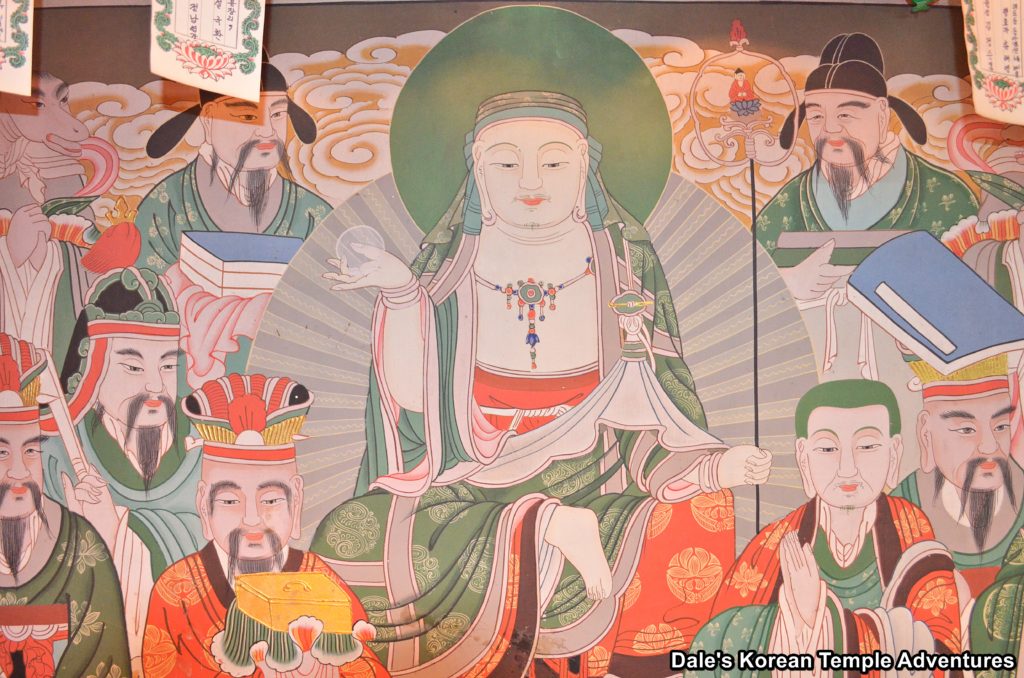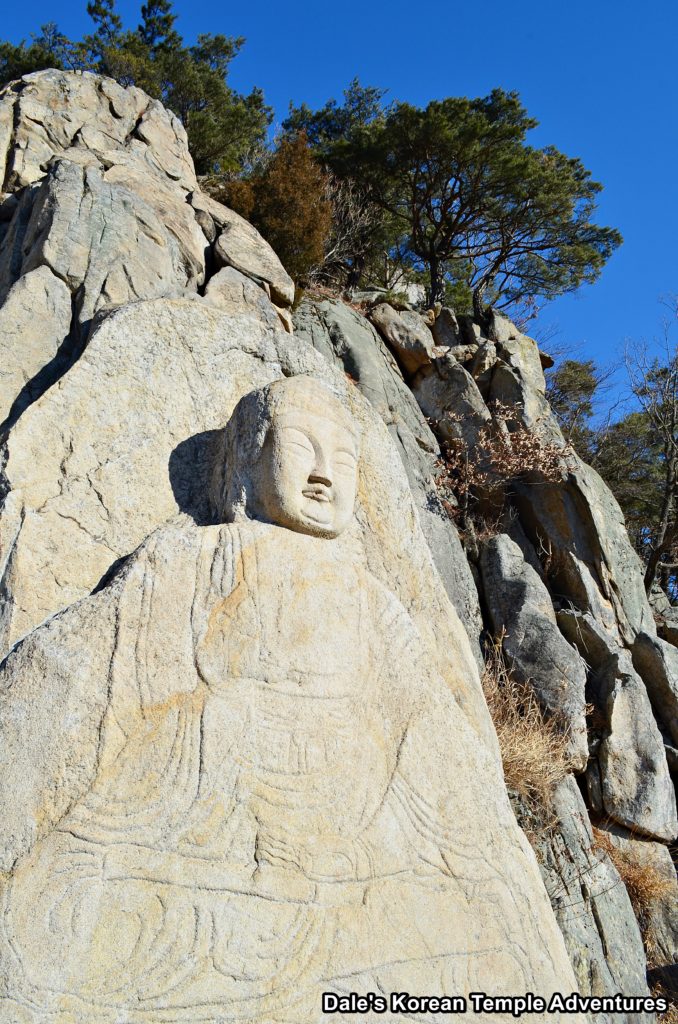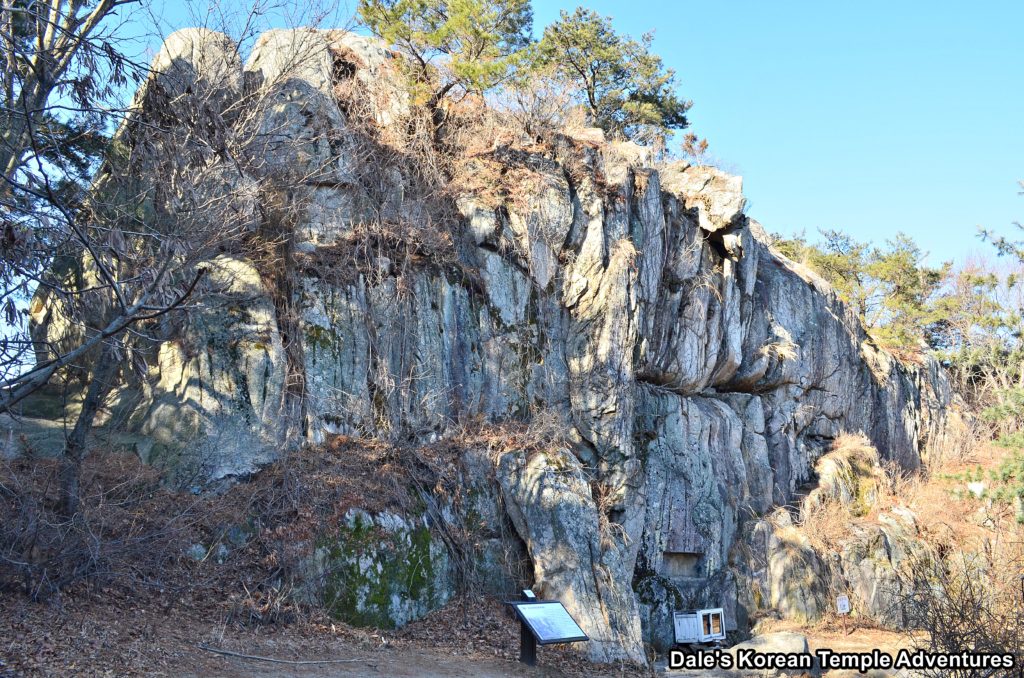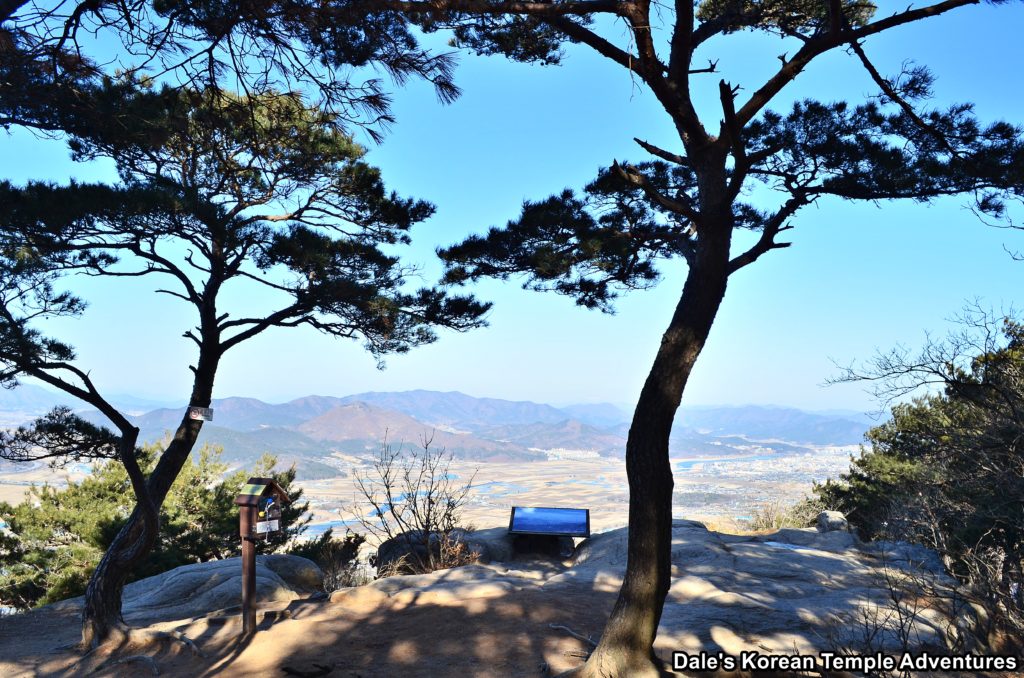Samreung Valley on Mt. Namsan – 삼릉골 (Gyeongju)
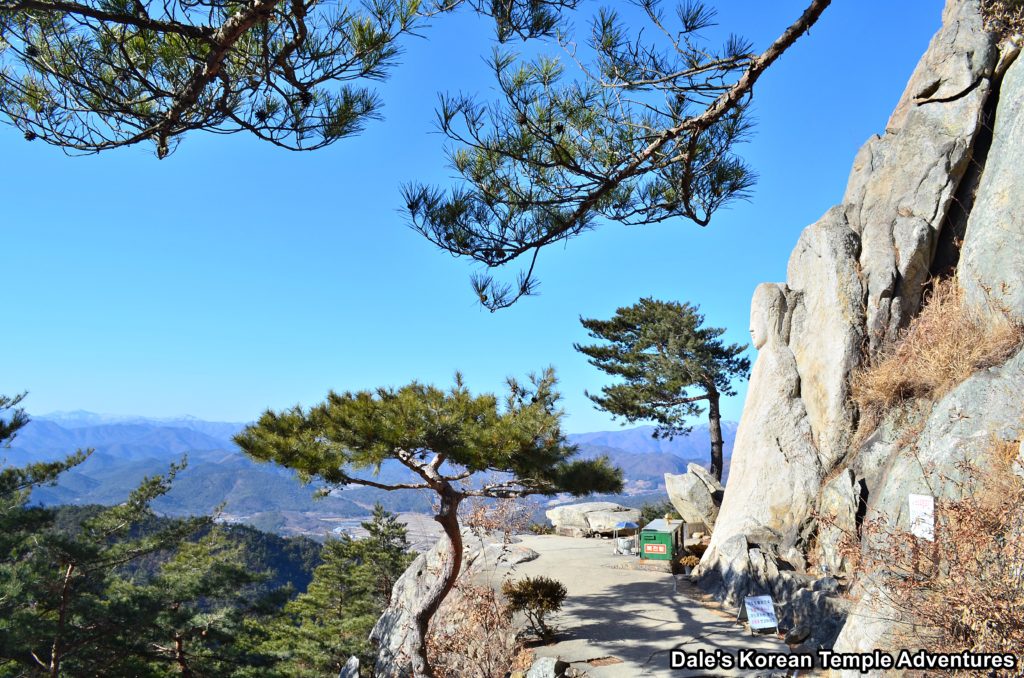
Valley Layout
Samreung Valley, on the west side of Mt. Namsan (495.1m) in Gyeongju, means “Three Tombs Valley,” in English. If Gyeongju is considered an outdoor museum then Mt. Namsan, and, more specifically, the Samreung Valley, is an outdoor shrine to Korean Buddhism.
From the visitors centre and the parking lot, it’s about a 1.5 kilometre hike to the top of the mountain. Leaving enough time to see everything, which there’s a lot to see, it’ll take anywhere from an hour to two hours to hike. The trail starts off rather easy, and then it gets gradually steeper at the midway point.
The first thing you’ll come across during this hike, and about 250 metres in, are the three burial mounds for which the valley gets its name: Samreung Valley. The first of the three burial mounds behind the fenced off area holds the earthly remains of King Adalla (r.154 A.D. to 184 A.D.) of the Silla Kingdom. The next in the twisted red pine backdrop is the tomb of King Sindeok who reigned from 912 A.D. to 917 A.D. Of the three, this is the largest tomb. The final burial mound, and the closest to the mountain, is that of King Gyeongmyeong (r.917 A.D. to 924 A.D.). King Gyeongmyeong was the third last king to rule over the Silla Kingdom before its eventual collapse.
Continuing up the trail on the leisurely wooden boardwalk, you’ll next come across the Headless Mireuk-bul (The Future Buddha) Statue. This next historical statue is a further 15 minutes up the trail, or 400 metres. This statue used to be buried in the valley, but was later unearthed and placed in its present location. It stands 1.6 metres in height and is missing both its head and hands. The most impressive feature of this statue are the details found in the monks’ clothing that it wears. The statue dates back to the Unified Silla Period.
Further along, and the next thing to be enjoyed, is the relief of Gwanseeum-bosal Image on a Rock Face. Only 50 metres up from the Headless Mireuk Statue, it’s hard to miss. This relief of the Bodhisattva of Compassion stands 1.55 metres in height and is slightly elevated and off the ground. Gwanseeum-bosal’s right hand is raised, while the left hand is holding a bottle. What’s most interesting about this relief is that the natural colours of the rock were used so that Gwanseeum-bosal’s lips could be red. And while the exact date of the relief is unknown, it’s believed to have been carved around the Unified Silla Period (668 A.D. to 935 A.D.)
Back on the main trail, and walking an additional 200 metres, you’ll next come to the Two Line-Carved Buddha Triads. The triad to the left is the first triad that you’ll see. The carving is four metres in height and width. The central figure in this triad is standing on a lotus base, while the two accompanying Bodhisattvas are kneeling, appearing as though they serve the central Buddha. The triad to the right is slightly larger than the first with it being four metres in height but seven metres in width. However, this triad doesn’t seem to have stood the test of time as well as the first triad. The central figure in this triad is Amita-bul (The Buddha of the Western Paradise) judging from its mudra (or “suin,” in Korean). Amita-bul is surrounded by a beautiful halo of light, as he sits on a lotus. Joining Amita-bul is Gwanseeum-bosal and Daesaeji-bosal (The Bodhisattva of Wisdom and Power for Amita-bul).
The final thing to be seen in the lower part of the valley, and about 180 metres from the Two Lined-Carved Buddha Triads, is the Seated Stone Buddha. This statue is Korean Treasure #666. The statue is perched on a mountain plateau, and it appears to be Seokgamoni-bul (The Historical Buddha) judging from the mudra of Touching the Earth. This statue is placed on a beautiful lotus pedestal. Sometime in its past, it was disfigured; and then to make matters worse, it was haphazardly put back together with cement. Fortunately, around 2007, this past misdeed was rectified. And now the statue, with its beautiful nimbus, was restored to its past glory. The statue dates back to around the 8th or 9th century.
The final 500 metres of the hike into the upper part of the valley is a bit more strenuous. But with that being said, it’s also the most beautiful part of the Samreung Valley, too. Next up is Sangseonam Hermitage. The hermitage was a recent addition, but it was built on the former foundations of an ancient Silla temple. The first thing to greet you to the hermitage are the nuns’ dorms. It’s next to these dorms that you’ll find the only shrine hall at Sangseonam Hermitage: the main hall. Inside the compact main hall, and immediately to your left when you enter, is Sanshin (The Mountain Spirit). Next to this painting is the vibrant Chilseong (Seven Stars) murals. And resting on the main altar are a triad of statues centred by Seokgamoni-bul and joined by Munsu-bosal (The Bodhisattva of Wisdom) and Bohyeon-bosal (The Bodhisattva of Power). The main hall is rounded out with murals dedicated to Jijang-bosal (The Bodhisattva of the Afterlife) and a Shinjung Taenghwa (Guardian Mural).
Next up, and guided by a sign that leads you there, is the Large Seated Statue of Mireuk-bul. Unfortunately, the stairs that once led up to it have been removed, and you can no longer see this relief up close and personal. The relief of the Future Buddha stands seven metres in height, and it faces the north with serene features. Without a doubt, the relief is the crowning achievement of the valley, and it was masterfully created during the Silla Dynasty (57 B.C. to 935 A.D.).
A little further up the trail, and finally at the peak of the mountain, you’ll get some amazing views of Gyeongju down below and the Large Seated Statue of Mireuk-bul off in the distance. The very final thing to be seen along the upper part of the Samreung Valley is the Sangaam Rock. This craggy rock is said to cure love-sickness, as well as granting wishes for women that want a baby boy. There’s a shrine on the east side of the rock with a headless Buddha to pray to. It’s also from up here that you get a commanding view of the valley from on high.
How To Get There
To get to Mt. Namsan and the Samreung Valley, you’ll first need to get to Gyeongju. Once in Gyeongju, and at the Intercity Bus Terminal, you can catch either Bus #502 or #504. Just make sure you’re headed in the right direction by asking the bus driver, “Namsan – Samreung-gol,” in Korean. You can take or bus or simply take a taxi. Again, simply say “Namsan Samreung-gol,” and the driver should be able to do the rest. The ride should cost about 8,000 won. From where the bus or taxi drops you off, the large trail head for Samreung Valley is opposite the parking lot.
Overall Rating: 10/10
You’ll be hard pressed to find a place, other than Samreung Valley on Mt. Namsan, packed with so many historic artifacts. And there just right there, out in the open, to be enjoyed. There are statues, stone reliefs, shrines, and even a hermitage. There truly is so much to see and enjoy along this valley.
